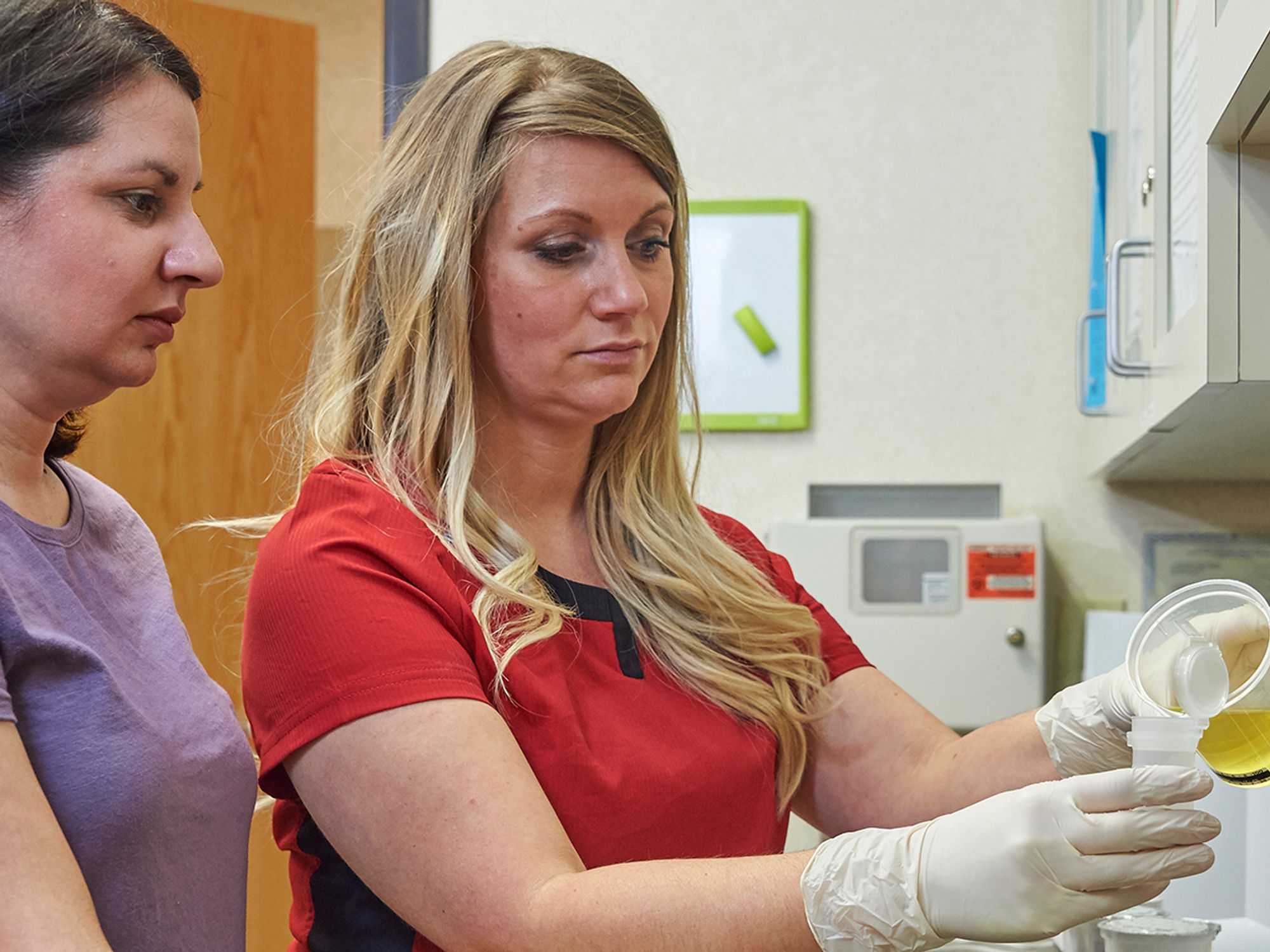InstituteDrug and Alcohol TestingDrug and Alcohol TestingIn Depth Sub Topics (Level 4)Substance AbuseUSAHR ManagementEnglishAnalysisFocus AreaHuman Resources
Drug testing protocol and procedures
['Drug and Alcohol Testing']

- Employers should document procedures and follow federal and state laws and regulations for conducting in-house drug tests.
- For off-site service providers, use a lab certified by SAMHSA or the state department of health.
Using a set procedure for drug testing helps ensure that state and federal regulations are followed. A written set of procedures helps those in charge of administering tests know what is expected. Consider including the following information in a procedural guide for drug testing:
- Testing procedures: The employer or service provider should take care that tests are conducted in a way that preserves the privacy and dignity of the person being tested.
- Certified laboratories: To ensure the accuracy of test results, it is best to have an initial positive test confirmed by a certified laboratory. The Substance Abuse and Mental Health Services Administration (SAMHSA) certifies laboratories which may conduct drug tests for federal agencies and regulated industries, such as the transportation industry. It is always a best practice to use a lab certified by SAMHSA or the state department of health. Some states require employers to use certified laboratories. States with laws relating to the use of certified or licensed laboratories for workplace drug testing include Connecticut, Hawaii, Idaho, Iowa, Louisiana, Maryland, Minnesota, Mississippi, Montana, Nebraska, North Carolina, Oklahoma, Oregon, Tennessee, Utah, Vermont, and West Virginia. These laws may relate to drug tests conducted under a voluntary state law or workplace drug testing in general.
- Chain of custody: This protocol documents what happens to a sample from the time it is collected until the time it is disposed of. A chain of custody form is written proof of everything that happens to a sample at the collection site and laboratory.
- Initial screen and confirmation test: A test may consist of an initial screen and a confirmation test if the initial screen is positive. If the confirmation test is positive, the test is reported as positive. Because of the need for the conformation test, a split sample is typically used. The urine sample is split into two, with one being used for the initial screen and the second for a confirmation test if that is needed.
- Cutoff levels: Drug testing determines that a specified amount of a drug or its metabolite is in urine, blood, or an alternative specimen. There is a minimum measurement applied to drug testing for a positive result to occur. This is called the cutoff level, and it is different for each drug. Setting cutoff levels can be challenging, as setting them too low will result in more false positives. If the level is set too high, however, a drug user could go undetected. Work with the company service provider to determine the proper cutoff concentrations for levels for non-Department of Transportation (DOT) tests. SAMHSA provides some guidelines.
- Medical review officer: In the event a test is positive, a review by a medical review officer (MRO) can ensure that all procedures were properly followed. The MRO can also contact the individual to make sure the positive result was not due to medication the individual was taking. If the MRO is satisfied that there was no medical or other legitimate reason for a positive result, the MRO reports the positive result to the employer. Using an MRO to make this determination can help an employer avoid a discrimination lawsuit. An employer that is aware of the prescriptions an employee is taking would have access to medical information. If the employer used this information as the basis for a negative employment action, such as not hiring or firing the individual, this would be problematic under the Americans with Disabilities Act (ADA).
- Testing tricks: The company service provider or in-house tester should be aware of the many ways individuals will try to beat the system and alter the results of a test. The service provider or company should have procedures in place for ensuring the accuracy of a test.
